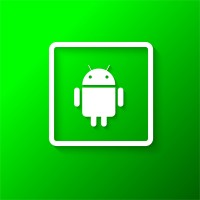
- Flutter AppBar
- Flutter Container widget
- Flutter Text widget
- RichText Flutter
- Row in Flutter
- Column in Flutter
- ListView in Flutter
- GridView in Flutter
- Stack in Flutter
- Expanded in Flutter
- SizedBox in Flutter
- Padding in Flutter
- Center in Flutter
- Align in Flutter
- FractionallySizedBox in Flutter
- AspectRatio in Flutter
- Baseline in Flutter
- TextField in Flutter
- Checkbox in Flutter
- Radio in Flutter
- Switch in Flutter
- Slider in Flutter
- DropdownButton in Flutter
- CupertinoPicker in Flutter
- ElevatedButton in Flutter
- TextButton in Flutter
- IconButton in Flutter
- GestureDetector in Flutter
- InkWell in Flutter
- PopupMenuButton in Flutter
- Image in Flutter
GestureDetector in Flutter
18-Sep-2024Learn how to use GestureDetector to detect and respond to various user interactions
The GestureDetector widget is used to detect and respond to various gestures such as tapping, dragging, and scaling.
A versatile widget that can wrap other widgets and provide them with gesture-related functionality.
There Are Some Common Attributes for GestureDetector
| onTap | Single Click Tapped |
| onDoubleTap | Double Tapped |
| onLongPress | Long Pressed |
| onVerticalDragUpdate | Vertical Drag Update |
Here's a simple example of using a GestureDetector in Flutter:
File open lib->main.dart file −
import 'package:flutter/material.dart';
void main() {
runApp(
MyApp()
);
}
class MyApp extends StatefulWidget{
@override
_MyAppState createState() => _MyAppState();
}
class _MyAppState extends State<MyApp> {
@override
Widget build(BuildContext context) {
return MaterialApp(
home: Scaffold(
appBar: AppBar(
backgroundColor: Colors.blue,
title: Text('GestureDetector Example',
style:TextStyle(fontSize: 20,color: Colors.white)),
),
body: Center(
child:
Column(
mainAxisAlignment: MainAxisAlignment.center,
children: [
GestureDetector(
onTap: () {
print('Tapped');
},
onDoubleTap: () {
print('Double Tapped');
},
onLongPress: () {
print('Long Pressed');
},
onVerticalDragUpdate: (DragUpdateDetails details) {
print('Vertical Drag Update: ${details.primaryDelta}');
},
child: Container(
width: 300.0,
height: 100.0,
color: Colors.blue,
child: Center(
child: Text('Press me',
style: TextStyle(color: Colors.white,fontSize: 20),
),
),
)
)
],
),
)
));
}
}
Open
Device Manager, run the emulator, and then run the application. Next,
check the working output and check the output you declared in your
code.
Output:



